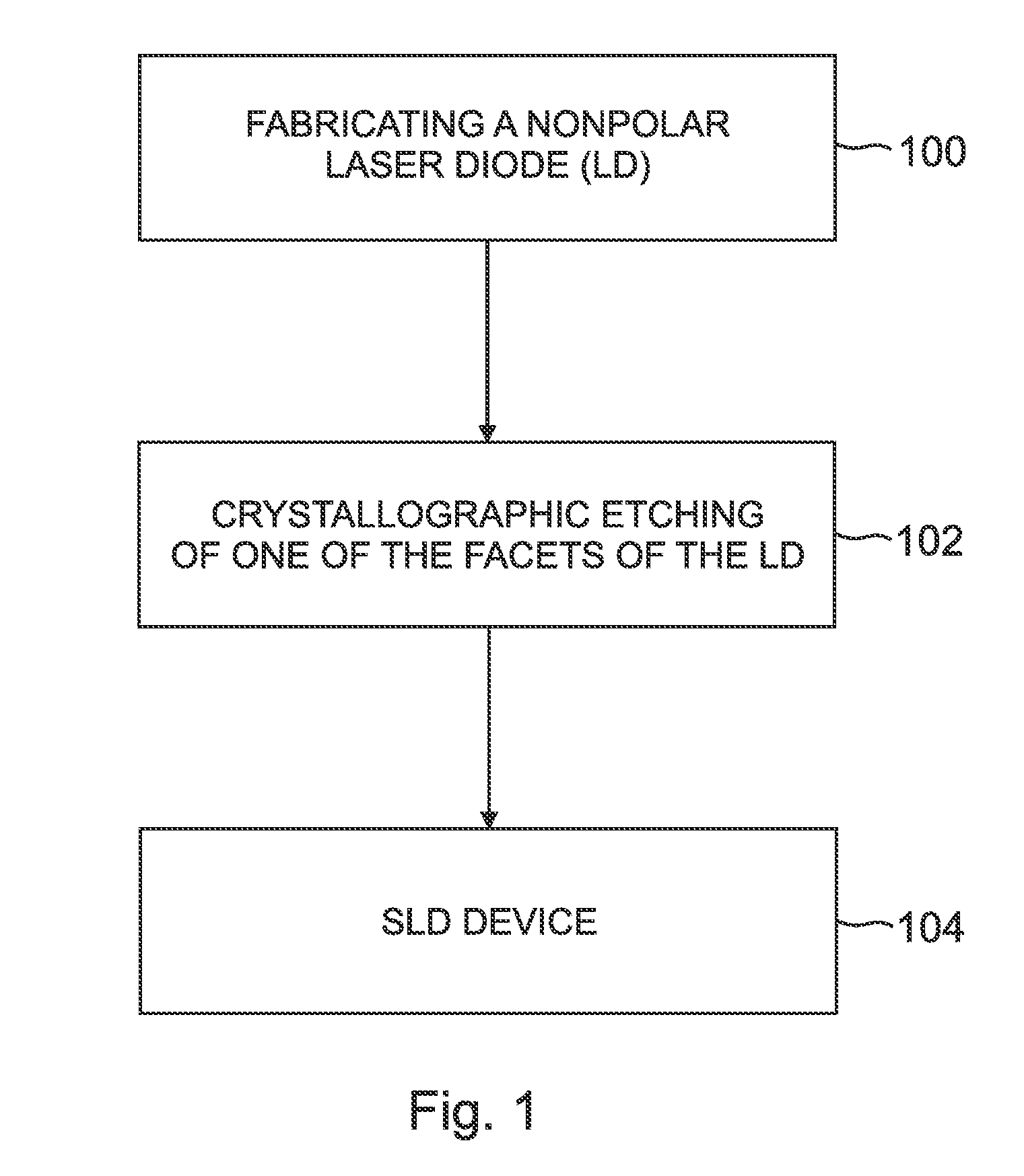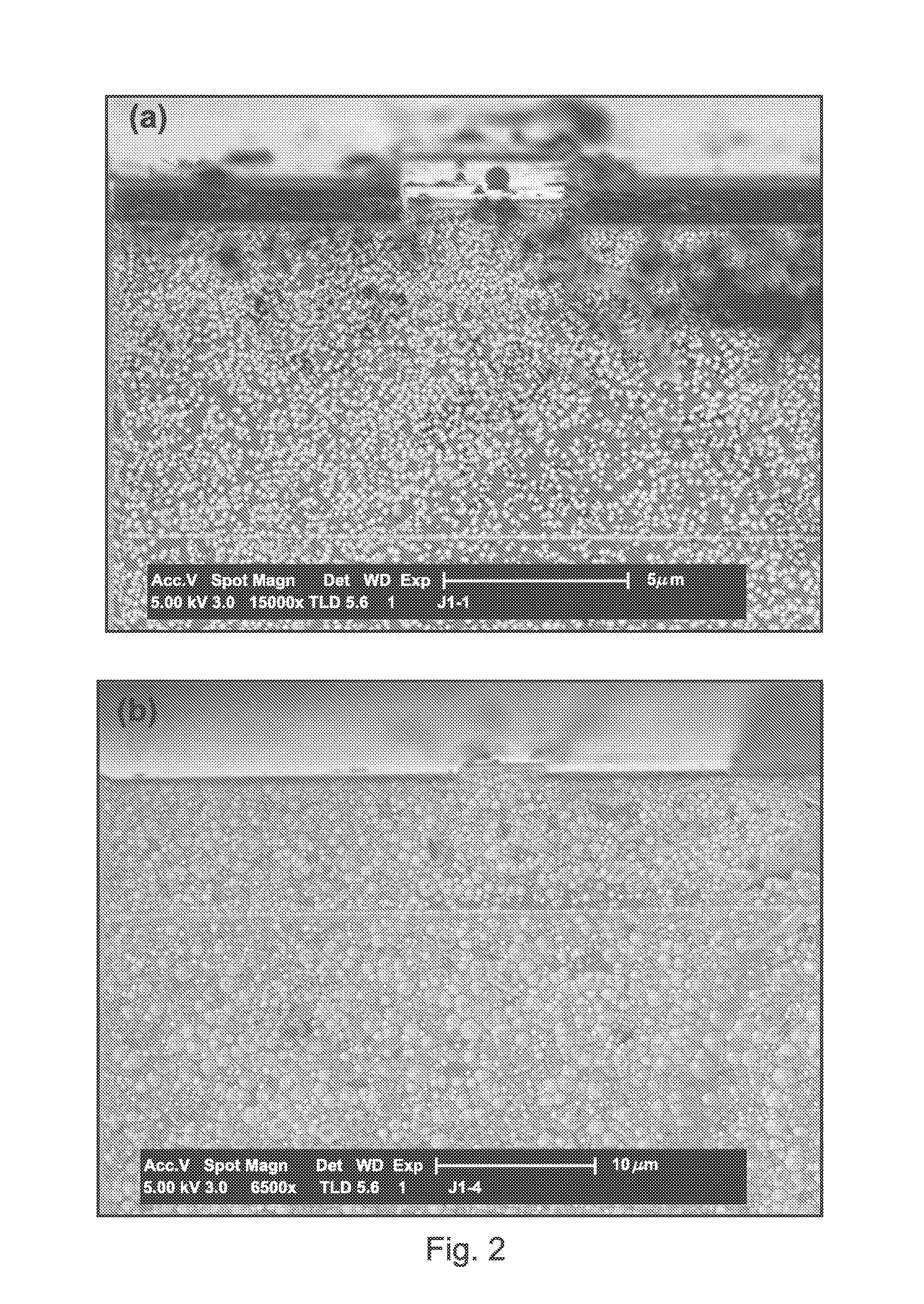Superluminescent diodes by crystallographic etching
a crystallographic etching and superluminescent diode technology, applied in the direction of lasers, semiconductor devices, semiconductor lasers, etc., can solve the problems of increasing the cost of fabrication, requiring multiple layers of effective anti-reflective coatings, and additional processing steps that are less compatible with mass production, so as to reduce internal loss
- Summary
- Abstract
- Description
- Claims
- Application Information
AI Technical Summary
Benefits of technology
Problems solved by technology
Method used
Image
Examples
Embodiment Construction
[0041]In the following description of the preferred embodiment, reference is made to the accompanying drawings which form a part hereof, and in which is shown by way of illustration a specific embodiment in which the invention may be practiced. It is to be understood that other embodiments may be utilized and structural changes may be made without departing from the scope of the present invention.
OVERVIEW
[0042]Crystallographic etching to form hexagonal pyramids has been demonstrated on the c− facet of m-plane (In, Al, Ga)N, and SLD device fabrication has been demonstrated. This invention allows the fabrication of a low reflectance facet suitable for production of nonpolar (Ga,In,Al,B)N based SLDs.
[0043]In one embodiment of the present invention, the non-reflecting −c plane facet, intended to prevent optical feedback along the c-axis waveguide, was fabricated by KOH wet etching. KOH selectively etched the cleaved −c facet leading to the formation of hexagonal pyramids without etching...
PUM
 Login to View More
Login to View More Abstract
Description
Claims
Application Information
 Login to View More
Login to View More - R&D
- Intellectual Property
- Life Sciences
- Materials
- Tech Scout
- Unparalleled Data Quality
- Higher Quality Content
- 60% Fewer Hallucinations
Browse by: Latest US Patents, China's latest patents, Technical Efficacy Thesaurus, Application Domain, Technology Topic, Popular Technical Reports.
© 2025 PatSnap. All rights reserved.Legal|Privacy policy|Modern Slavery Act Transparency Statement|Sitemap|About US| Contact US: help@patsnap.com



